Your Cart is Empty
MOTO Products
shop your way
Choose a shopping experience
Same great Risk Racing products, 3 completly different ways to shop them.
Choose a shopping experience
Same great Risk Racing products, 3 completly different ways to shop them.
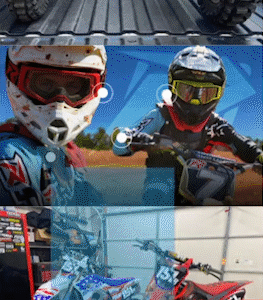
Lifestyle Shopping
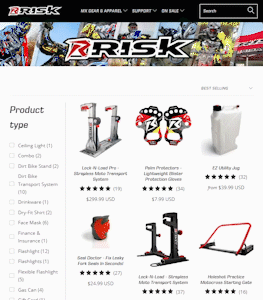
eComm Shopping
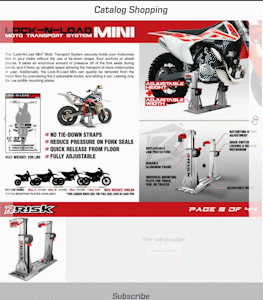
Catalog Shopping
MOTO TYRES
MOTO Gear & Apparel
How to Train for Motocross Racing
November 05, 2020 11 min read
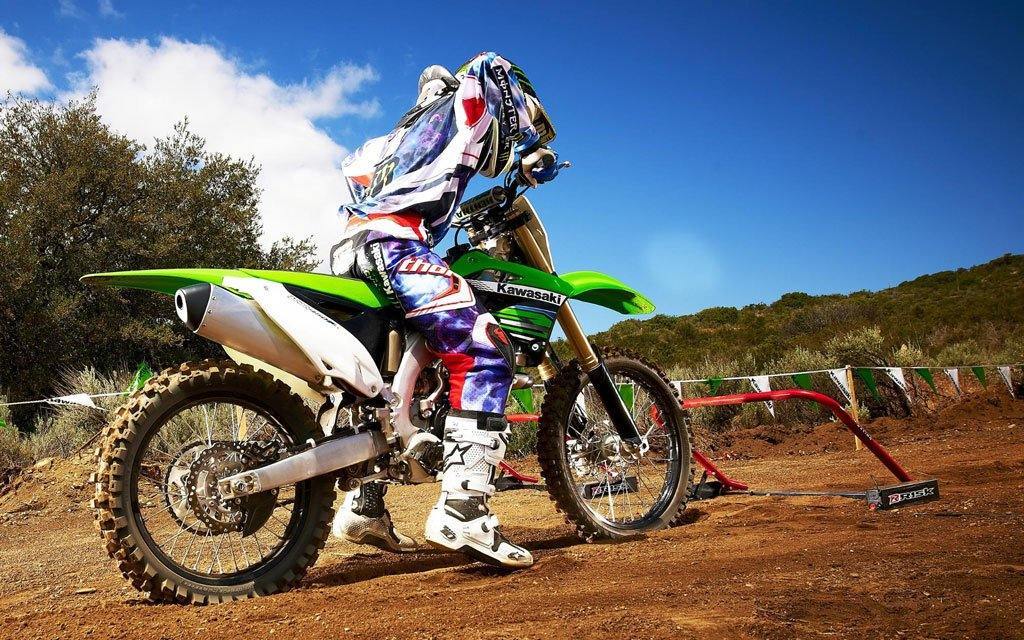
Motocross is an extremely fast-paced motorsport that like most professional sports competing at a high level, is not something that just comes naturally, but with many hours of blood, sweat, and tears.
To train for Motocross, racers need to put in the training time both on and off the track. Situations like starts, turns, and jumping can be practiced out on the bike. While cardio, strength training, and weight training can be done off the bike.
But before we dive into the good stuff I better mention that I’m not a doctor or a personal trainer, I just love motocross and want to share some good information with you. It’s your responsibility to take this information and assimilate it into your life in a way that is safe for you.

How Do You Train Like a Motocross Racer?
Like many other extremely physically demanding professional sports, you have to be in peak physical condition to be able to respond to the chaos of MX racing. While you can’t directly compare something like professional football, gymnastics, or martial arts to National Motocross racing. You can see that these athletes are all at the top of their game and push their bodies to the limit to be ready for anything.
There are some that might say that because you have a seat and an engine that the bike is doing all the work and you are just sitting there, hanging on. Well, they would be very far from accurate because just hanging on and letting the engine do all the work only happens for milli-seconds at a time. The rest of the time you are using every muscle in your body to try and keep the bike underneath you or at least somewhat near you.
To be able to throw a two hundred plus pound bike around lap after lap even when your mind tries to tell you that your body is done will take a lot of training time. Let’s dive into the two major areas of training, on the bike and off the bike.

On The Bike (MX training)
Some of the major areas to really practice are going to be your balance, posture, and endurance while tackling large areas like your starts, turning, jumping, and more!
Starts
The start of a motocross race is one of the most important moments of the event. If you compare getting the holeshot to an entire season of motocross, they both are a way to weed out the pack and narrow down the field to see who can perform the best. But, in the case of the moto start, all of that happens in about four seconds.
So what to do? Get your own motocross starting gate and practice your technique. Risk Racing makes an MX starting gate appropriately named theHoleshot Start Gate, and it is as close to being at the track as you can get.
Having your own race gate to practice with means you can create your own constants and variables like terrain conditions, weather conditions, and bike tuning, while mixing it up to get a wide variety of experience to dial-in and hone your skills.
Here are some areas to work on for MX starts:
- Timing
- Body posture, position, and balance
- Clutch, brake, and throttle control
- What RPMs to engage at

Turning
Working on your cornering game is important. Everyone’s cornering formula will be slightly different depending on your body and bike type. When you watch the big dogs racing and two riders start to battle it out, the pass usually happens in a corner. They can be neck and neck over multiple jumps but that corner is where the work begins. They don’t call it “jumps for show, corners for dough” for no reason!
Major areas to work on are:
- Corner entry speed and braking
- Body posture and position on the bike
- To clutch or not to clutch
- Power delivery during the turn
- Exit strategy

Jumping
This may seem obvious at first, but to get good at motocross you will need to practice jumping (and I don’t mean just practicing not endo-ing or looping out). I’m talking about hitting the track with the intention of taking the path of least resistance. Clearing four jumps at once in a rhythm section is less resistance than taking it as two double jumps.
That’s right, this is the time to practice outside of your comfort zone. During races, you need to be consistent with-in your current abilities, but training time is perfect for riding just outside of your comfort zone. Jumping is really a matter of experience and confidence. The more time you get in the air, the more confidence you’ll have for really sending it on those doubles and triples!
Major areas to work on are:
- Getting airtime (experience)
- Whips… for show of course!
- Scrubbing (getting just enough air to get over a jump to get the power back down on the ground faster)
- Seat bouncing
- Skimming the tops of the whoops

Off The Bike (MX training)
Watching the Pros
A great way to learn from the best these days is through the use of video. I mean come on, who doesn’t go to YouTube when they need a quick lesson before trying something new?
A lot can be learned from watching motocross races and even more from GoPro footage. I’m referring to videos that have been captured from an action sports camera mounted on the racer, usually attached to their helmet. This type of ride-along footage can be extremely helpful for emulating the winning racers. (Make sure that’s who you’re taking notes from, not the guy in the back of the pack.)
When dissecting the helmet cam footage, be sure to look for things like their left hand. Are they using the clutch a lot or not at all? You can listen to their bike and determine how hard they push before, during, and after the apex of a corner. You can watch for their line decisions to see what paths keep them out in front. Another way to learn from footage would be to capture footage of your races, then dissect and compare it with others.

Cardio
Endurance is the name of the game when it comes to motocross. This is considered one of the most difficult sports on the planet! Just because the dirt bike has a seat does not mean that Motocross is a ‘sitting’ sport. The crazy terrain of an MX track wouldn’t let you just sit down. So, for the majority of a race, the rider is in somewhat of a high squat, allowing their legs to act as a form of suspension for the rider.
A day of motocross racing can involve two to three 5-minute races that lead up to a 35-minute final race. I’m sure you can imagine that your legs can turn into spaghetti in no time. This is where the cardio comes in. If you aren’t pushing your body to be able to do a triathlon of MX racing, then you are going to be gassed out after just your first moto. As soon as your MX training starts for the year, your goal should be to be able to ride at your best for an entire 35-minute moto.
How do I increase my motocross endurance?
To get the cardio in, you’re going to want to fall in love with running, biking, or something that gets your heart racing and make it happen every time. Meaning, once you decide the frequency of your cardio, you stick to it no matter what. Go for a couple of mile run, spin 15 plus miles on a road bike, or hit the treadmill. Whatever the flavor, have a solid cardio routine in place that can push you to build endurance.

What Muscles Does Motocross Work?
The quick answer is that motocross racing uses every muscle in your body! Let’s start from the ground up. As far as your foot posture goes, you should be aiming to keep only the balls of your feet on the pegs. This will allow you to rotate your heels out and give you more squeeze power with your knees to really hold onto that dirt bike under you.
Because your heels are free, you are going to be using your calf muscles heavily. As I’ve already mentioned in the cardio section above, a racer spends the majority of their race time standing up in a high squat. This means that you will be using the quads, hamstrings, and calves to their max. If you haven’t already concluded, don’t skip leg day at the gym.
Moving up from the legs we’ve got the trunk or core muscles of the body. We’re talking about the abs, pecs, glutes, traps, lats, delts, and more. This is the connection between the two different parts of your body that are holding on for dear life. We’ve got the legs hugging the sides of that dirt bike and we’ve got the arms and hands holding onto the handlebars. That core needs to be able to let you bend and twist with ease.

For the arms, you’ve got traps, biceps, and delts and this is definitely an area that needs to be built up and conditioned to take the abuse of getting slammed up and down and back and forth at crazy speeds. This is not only a good place to obviously strength train, but also an important place to work on blood flow by stretching and working on the wrist and forearm. ‘Arm Pump’ is caused by the blood flow in your forearms so keeping work those spots out.
Arm pump can also be minimized by using a good palm protector, check out the product section at the very end of this article to learn more.
Check out this video by Sean Casey showing you first hand how to work that pain out of your forearms:
What Exercises Should I Do For Motocross?
Alright, so we’ve basically said that your entire body needs to be in amazing shape and that you need endurance that lasts for days. But how do we actually get there you might be asking. Well, you may have heard the phrase “there are a million ways to skin a cat” and that applies here just the same. There's not any one exercise that is the silver bullet or magical answer because there are a huge number of effective exercises for each muscle group you want to work on.
Instead, I would like you to think of these exercise suggestions like a musical playlist. You don't have to like every single song, but you need to get in a few songs from every genre, or in this case a couple of exercises from each category, to make sure you work out every muscle in the body.

Legs Workout Category
This one is huge. As I’ve already mentioned, when you are out on the track you're doing very little sitting, but rather a lot of squats going from full standing to sitting and hovering somewhere in between. This can be practiced obviously by doing any one of the dozen squat variations out there.
Your calves are going to be doing a ton of work as you're keeping only the ball of your foot on the footpegs. Calf raises are a great exercise to build up those muscles.
Core Workout Category
This one should be on everyone’s list of To-Do’s as it incorporates something from almost every muscle group, including grip strength! A kettlebell is a free weight designed with a large handle on top and the kettlebell swing is essentially a squat done in unison with a pendulum-like weight swing as you raise and lower arms in conjunction with your bum.

The trick to really squeezing the juice out of this one is to push yourself to go lower on your squats and then when you pop up to the standing position really engage your glutes and push your pelvis out.
This is definitely one of those exercises that seem so easy on paper. I mean you’re essentially holding a push up or push up variation (on forearms, knees down, etc.) but it can get shaky really quickly if you aren’t building up your core. This is basically a bridge between your upper and lower limbs so if you're not a huge fan, just look for other bridging methods.

In addition to the standard plank, you’ve got side planks which also allow for different arm variations meaning you could put your free hand on your waist, up high in the air, or be sending that hand down and underneath your torso and then back up to the sky to really push your torso.
Resistance bands can be used as a way to get a good torso twist. With the bands attached securely to a heavy object (ideally way heavier than you!), they can be stretched out horizontally away from their attachment point.
This can be used to push you to hold body positions like lunges for example. While getting in your leg work doing forward leg lunges you can be holding the band while it forces you to twist your torso to maintain a straight posture.

You can also hook them to your feet in a “V” up crunch shape and twist your torso to each side to do what's called a Russian Twist.
These quick examples show that these bands can be an add-on to a lot of other techniques to make them harder by adding resistance.
This is where you take a bosu ball (half sphere) or a yoga ball and you carefully lay down on it and by somewhat balancing on your low back. Putting your hands out long over your head keeping them in line with your torso as you rotate from a 45 deg reclined position to slowly laying all the way down even past flat as your curve your back across the ball under you.
After stretching all the way out at the bottom, it’s time to slowly bring yourself back up keeping your hands together above your head. To push yourself with this exercise just go slower during the up and down of the crunch.

Arms Workout Category
As you saw from the categories above, arms are one of those things that you can add-in while focusing on another area. One thing I do want to mention is that you should be actively looking for ways to modify your workout to fit motocross with the biggest ideas being grip strength. Try to do suggested workouts but modify it with the use of free weights or even how your holding the weights so that you focus on pushing your grip strength.
Here are some example arm workout ideas:
- Resistance Bands (variations can work arms shoulders and back)
- Pull-Ups
- Kettlebells
- Free weights
Products to Help You Train Motocross
Variable Heart Rate MonitorThis is a fancy way of saying, the chest strap monitor. These devices give accurate data wirelessly via Bluetooth to your phone. You can use the data to give you an instant look at how your body responds to working out and being pushed. |
 |
 |
Resistance or Mobility BandThese can be used to create variations on more basic workouts. Very useful for opening up areas, stretching areas, and giving resistance to areas that are otherwise hard to get like the torso twist. These can also be used to restrict blood flow to forearms and calves for instance. This is a whole other rabbit hole called BFR training. |
Holeshot Race GateThis appropriately named track accessory lets you practice your moto starts. It comes with a wireless button that can be mounted on your handlebars, that once pushed gives you a randomized drop sequence. It also lets you hook multiple together to race with friends and comes with a wired remote for a helper or trainer to do the gate dropping instantly. |
|
Palm ProtectorsThese can be thought of like glove liners going under your MX gloves. They dampen the vibrations coming into your body through your hands, reducing arm pump. They're also extremely useful for working out as they are fingerless gloves that let you get ahold of free weights with confidence. |
Leave a comment
Comments will be approved before showing up.
Subscribe
Sign up to get the latest on sales, new releases and more …
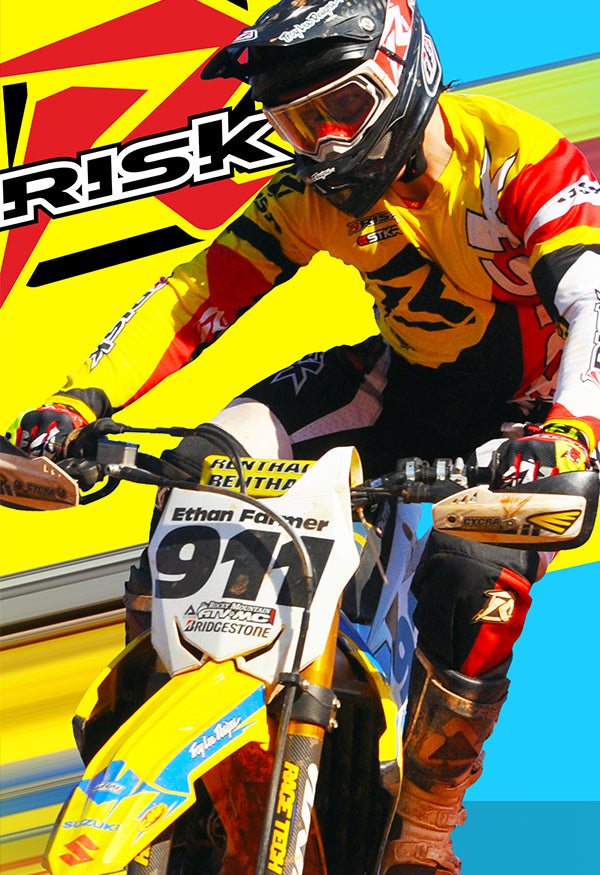
Limited Time 10% Off
Save on your 1st order and get email offers when you join.
Eligible for first-time website purchases only. Emails may take a few minutes to process and could get flagged by email providers as junk so be sure to wait a little bit and check your junk and/or spam folders.

 UK/EU▾
UK/EU▾



























